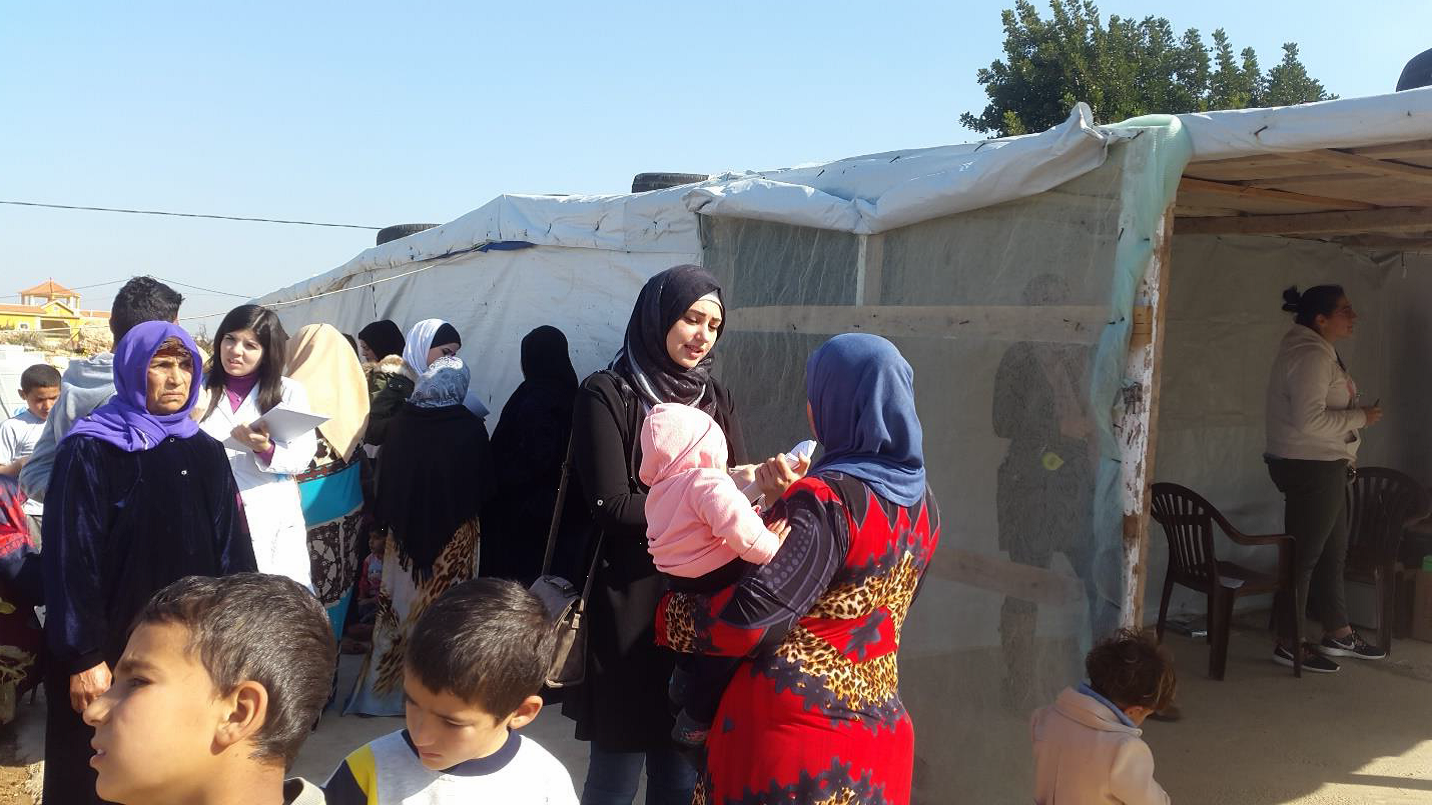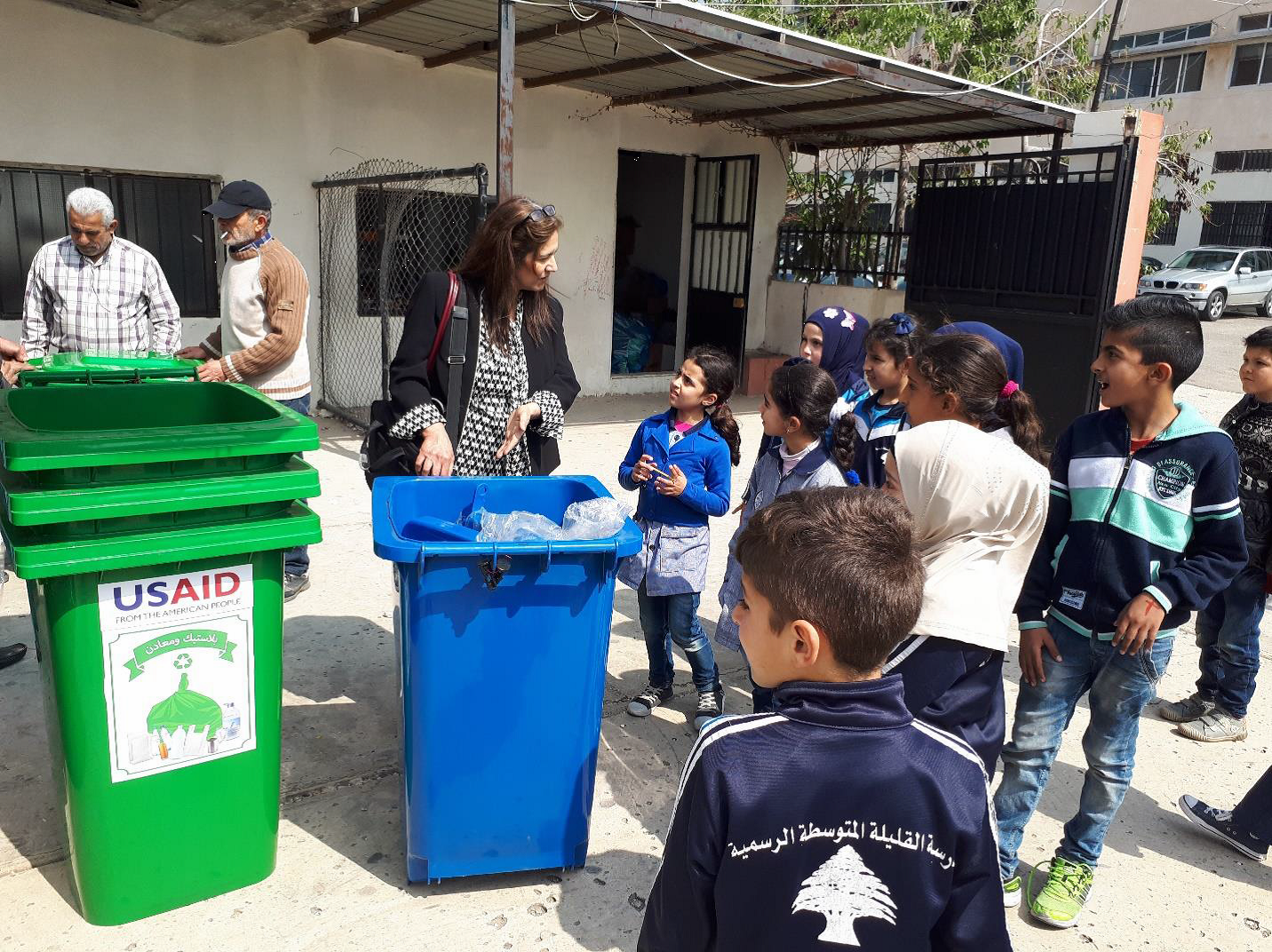|
Cycle 5 (2015 Deadline)
Hazardous effect of pollutants in the Deir Kanoun Dump on Syrian refugees and Lebanese people
PI: Jamila Borjac (j.borjac@bau.edu.lb), Beirut Arab University
U.S. Partner: Diane Blake, Tulane University
Dates: December 2016 - June 2019
Project Overview
The aims of this project were to identify chemical and microbiological pollutants present in Deir Kanoun Ras el Ein dump that are leaking into surrounding soil and water and then to assess their hazardous effect on the Syrian and Lebanese people living in that area. Cancer and respiratory, skin, and other diseases are occurring at an increasing rate in that area, which covers more than ten villages. Water from this dump leaks into a canal that irrigates a large agricultural area. Identification of these pollutants, both chemical and microbiological, should contribute to finding a solution to protect the people living in the area. Using various advanced analytical chemistry techniques, the researchers focused on identifying the toxic metals and cancer-inducing chemicals deposited into the dump by factories. Microbiological techniques were also used to identify the types of microorganisms growing in the dump, and clinical and biochemical techniques were applied to analyze the extent of health damage suffered by people living near the dump. The ultimate goal was to document the comprehensive environmental and health impacts of the dump and then find a solution to eliminate the health-damaging effects on local residents. This project linked university students, many of them female, to social problems, especially in rural regions.
 |  | | Participants complete questionnaires for the PEER project in one of the Syrian camp study sites. (Photo courtesy of PI Dr. Borjac) | Recycling bins distributed to the public high, middle, and elementary schools in Klayleh to encourage students to recycle. (Photo courtesy of PI Dr. Borjac) |
Final Summary of Project Activities
Throughout the project, the research team was successful in a number of areas, including the following:
1. Identification of microbial contaminants in studied samples from leachates and canal water. Enterobacter, Serratia, Shigella, Citrobacter, Bacilli, Vibrio, Klebsiella, and Escherichia species were among the identified bacteria. Extending along the canal, a significant increase in bacterial count was noticed due to anthropogenic activities rather than due to the dump’s leachates.
2. Assessment of the levels of organic pollutants and heavy metal in collected samples. The results revealed that water samples collected from dump and canal were heavily polluted by Cd, As, Hg, phthalates, bisphenol A, and PAHs caused by pyrogenic and petrogenic sources. The concentrations of the found heavy metals were far above the maximum tolerable levels set by different guidelines. The findings suggest that the studied water sources are not safe neither for irrigation or drinking and have serious implications on the health of inhabitants both the Lebanese and the Syrian refugees.
3. Determination of levels of some heavy metals and organic compounds in different soil samples collected from the dump and along the canal. The results confirm high levels of contamination in the collected soil samples by both heavy metals and organic compounds. The levels of heavy metals also exceeded the average maximum permissible levels for sewage sludge and agricultural land. These findings suggest the need for mitigation measures by the Lebanese authorities for new and efficient waste management programs to resolve the problems associated with uncontrolled dumping of solid wastes in Lebanon.
4. Investigation of the effect of pollutants on the oral and dental health of the Lebanese and Syrian refugees living in proximity of the dump. Results highlighted the prevalence of several oral and dental diseases among Lebanese and Syrian inhabitants that are related to environmental, social, and economic determinants and not just by individual behaviors. It also showed gaps of oral and dental health knowledge that recommend implementing health systems that focus on preventing oral diseases.
5. Investigation of the associations of living in the studied polluted area and the abnormal trends of cell blood count parameters. This component of the study emphasized the damaging effect of Deir Kanoun Dump on all inhabitants of the surrounding region, and on this basis the researchers called for immediate intervention from the Lebanese government to find solutions. Results showed abnormal levels of many blood parameters indicating hematological disorders such as anemia, infections, allergy, and inflammation. Similar trends of abnormal CBC parameters were observed among the three villages. The highest percentage of abnormal erythrocyte parameters was found in Klayleh, while for leukocyte parameters, the highest was in Smaiyeh. Significant differences were observed between sexes and nationalities, which may be associated with low income, environmental pollution and poor hygiene.
6. Delivery of seminars in three schools and the villages to encourage students and inhabitants to recycle and sort at the source. The team encouraged school students in the area studied to think about problems associated with pollution and its effect of their health and to learn the importance of their acts on their society. The aim was to make these inhabitants actively involved with their society and minimize unnecessary dumping.
7. Engagement of undergraduate and graduate students in diverse activities related to the project both at the social and research levels. A large number of students were involved and gained experience in the tasks they were assigned. Many still follow up with the PI to see if they can be involved in additional projects.
Publications
Jamilah Borjac, Manal El Joumaa, Lobna Youssef, Rawan Kawach, and Diane A. Blake. 2020. Hindawi the Scientific World Journal 2020: Article ID 8151676. https://doi.org/10.1155/2020/8151676
Jamilah Borjac, Manal El Joumaa, Mohamad Darwiche, and Diane Blake. 2020. Hematological Parameters of Lebanese and Syrian Refugees Living in Proximity of Deir Kanoun Ras El Ain Dump in Lebanon. BAU Journal - Health and Wellbeing: 3(1): article 4. https://doi.org/10.54729/2789-8288.1049
Jamilah Borjac, Manal El Joumaa, Rawan Kawach, Lobna Youssef, and Diane A. Blake. 2019. Heavy metals and organic compounds contamination in leachates collected from Deir Kanoun Ras El Ain dump and its adjacent canal in South Lebanon. Heliyon 5: e02212. https://doi.org/10.1016/j.heliyon.2019.e02212
J. Borjac, S. Badr, M. ElJoumaa, I. Daas, and R. Kobeissi. 2019. Oral and dental status of Lebanese and Syrian refugees living in proximity to Deir Kanoun Ras El Ain dump in Lebanon. Journal of the International Society of Preventive and Community Dentistry 9:409-16. https://doi.org/10.4103/jispcd.JISPCD_214_19
Jamilah Borjac, Mariam Shaheen, Mohammad Nsaif, Sara Abou Khalil, and Diane A. Blake. 2018. Bacterial Analysis of Dump Leachates and Irrigation Water from a Canal in Deir Kanoun Ras El Ain in Lebanon. Poll Res. 37 (4): 886-893.
Back to PEER Cycle 5 Grant Recipients
|
|
|
|





